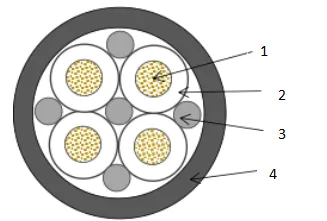Dec . 10, 2024 13:25 Back to list
Water Y Strainers for Efficient Filtration Solutions in Fluid Management Systems
Understanding Y-Strainers for Water Essential Components for Efficient Water Management
In the world of water management and pipeline systems, maintaining efficiency, quality, and safety is of utmost importance. One critical component that plays a significant role in this process is the Y-strainer. This device is an essential tool for filtering out unwanted debris and protecting equipment from potential damage. In this article, we will explore what Y-strainers are, their functions, types, installation requirements, and their importance in water management systems.
What is a Y-Strainer?
A Y-strainer is a specialized filtering device used in various piping systems, including those for water, oil, and gas. Named for its distinctive Y shape, this strainer allows fluid to flow through while trapping unwanted particles, such as dirt, sand, and other impurities. The design of the Y-strainer offers minimal pressure loss, making it an efficient choice for many applications.
Functions of Y-Strainers
The primary function of a Y-strainer is to protect equipment from the harmful effects of debris and contaminants in fluid systems. By preventing these particles from entering pumps, valves, and other critical components, Y-strainers help to prolong the life of the equipment and reduce maintenance costs. They also ensure smooth operational efficiency by maintaining the integrity of flow within the system.
In addition to protecting equipment, Y-strainers can also play a role in compliance with health and safety regulations. Clean water is crucial for drinking, agricultural use, and industrial applications, and ensuring that contaminants are filtered out is essential for meeting these standards.
Types of Y-Strainers
Y-strainers come in various types and designs to suit different applications and requirements. The most common materials are stainless steel, cast iron, and plastic, each offering different levels of durability and resistance to corrosion.
1. Mesh Y-Strainers These are designed with a woven mesh filter element that is efficient in trapping small particles from the fluid while allowing larger volumes to pass through.
2. Perforated Y-Strainers These filters have drilled holes that allow for larger particles to be captured, making them ideal for applications where larger debris might be present.
y strainers for water

Installation Requirements
Proper installation of Y-strainers is vital for their efficiency and longevity. Here are some key considerations to ensure effective installation
- Orientation Y-strainers should be installed in a way that allows for easy access to the filter element for cleaning or replacement. Generally, the filtration element should be placed horizontally or slightly inclined.
- Location They should be installed upstream of critical components like pumps and valves to ensure that any debris is captured before it can cause damage.
- Size Selecting the right size is crucial; a Y-strainer that is too small will not be able to handle the flow rate, while one that is too large may not filter effectively.
Importance in Water Management
In water management systems, Y-strainers are indispensable. They help protect treatment plants, distribution networks, and end-user applications from damage caused by debris. By ensuring that only clean water is circulated through the system, Y-strainers play a crucial role in maintaining the overall quality of water supplied to communities.
Moreover, they significantly reduce maintenance downtime. By filtering out contaminants before they can accumulate and cause blockages, Y-strainers contribute to more efficient operations, less frequent repairs, and ultimately lower costs for water utility providers.
Conclusion
In summary, Y-strainers are essential components in the management of water systems, providing vital filtration capabilities that protect both infrastructure and quality. By understanding their functions, types, and installation requirements, organizations can optimize their water management practices and ensure a steady supply of clean, reliable water. As water systems continue to evolve and face new challenges, the role of Y-strainers in maintaining efficiency and safety will only continue to grow. Investing in high-quality Y-strainers can lead to long-term benefits and sustainability in water resources.
Share
-
Advanced Technology in Wire and Cable FactoryNewsAug.19,2025
-
Applications of Ball Check Valve in Water Treatment PlantsNewsAug.19,2025
-
How Osy Gate Valve Ensures Leak - Tight SealingNewsAug.19,2025
-
Selection Criteria for Wafer Type Butterfly ValveNewsAug.19,2025
-
Threaded Ball Valve Pressure RatingsNewsAug.19,2025
-
Y Strainer PN16 Cost - Effectiveness AnalysisNewsAug.19,2025


